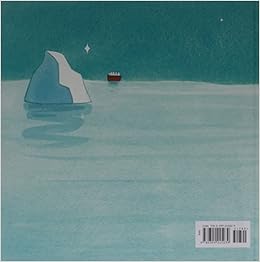


The illustrations also assist the reader in identifying the warm feelings of both characters, through the soft roundness of their figures and their closeness to each other (Winch, G. To assist with contrast, the characters are small and vulnerable, angled at a bird’s eye view emphasising that they are dwarfed by the size of the big ship, the whales and the ocean, indicating to the reader the enormity of the task ahead and also the loneliness and vastness of the ocean. Jeffers also uses fluid lines of status to indicate movement when the characters are rowing across the ocean. The primary colours are flat and warm when the child and the penguin are at home, but blue, cool colours when they are on the ocean. Jeffers (2005) has used watercolour as the chosen medium for the illustrations. Gamble also suggests that the typeface used in picture books is usually sympathetic to the type of book and the intended audience In Lost and Found the typeface is in a large, childish, visually appealing and supportive font. In Lost and Found the full illustrations are set out as a double page spread, “Which can serve to slow the story down” (Gamble, 2013, p.211), with the text placed generally to above or below the illustration. The arrangement of illustrations within the book can set the pace for the story. The book explores the themes of friendship and resilience.

The book, Lost and Found, by author/illustrator Oliver Jeffers, is about a boy who finds a lost penguin on his doorstop.

All of these illustration purposes are shown in the wonderful book I have chosen. Gamble, (2013) observes that the purpose of illustrations is to add a richness and depth to a storyline, convey meaning and may also indicate a particular mood, show symbolic associations, perspective and viewpoint (p.213). Illustrators may work in a wide range of media such as watercolour, collage, pen and ink or photography. Picture books are usually composed of both text and illustrations. Children’s literature and in particular picture books, are an integral part of developing learning about the purpose and meaning of books the books’ language, word choices, the world, giving further meaning and “stimulating an inner imaginative process that is in itself another type of language-ing” (Winch, Johnston, March, Ljungdahl, & Holliday, 2010, p.473-474). Visual images may also add a sub-context to a text, telling a different story. Visual literacy is the ability to decode the images and messages within a text, bringing meaning to the story, and helping with understanding and perception.


 0 kommentar(er)
0 kommentar(er)
